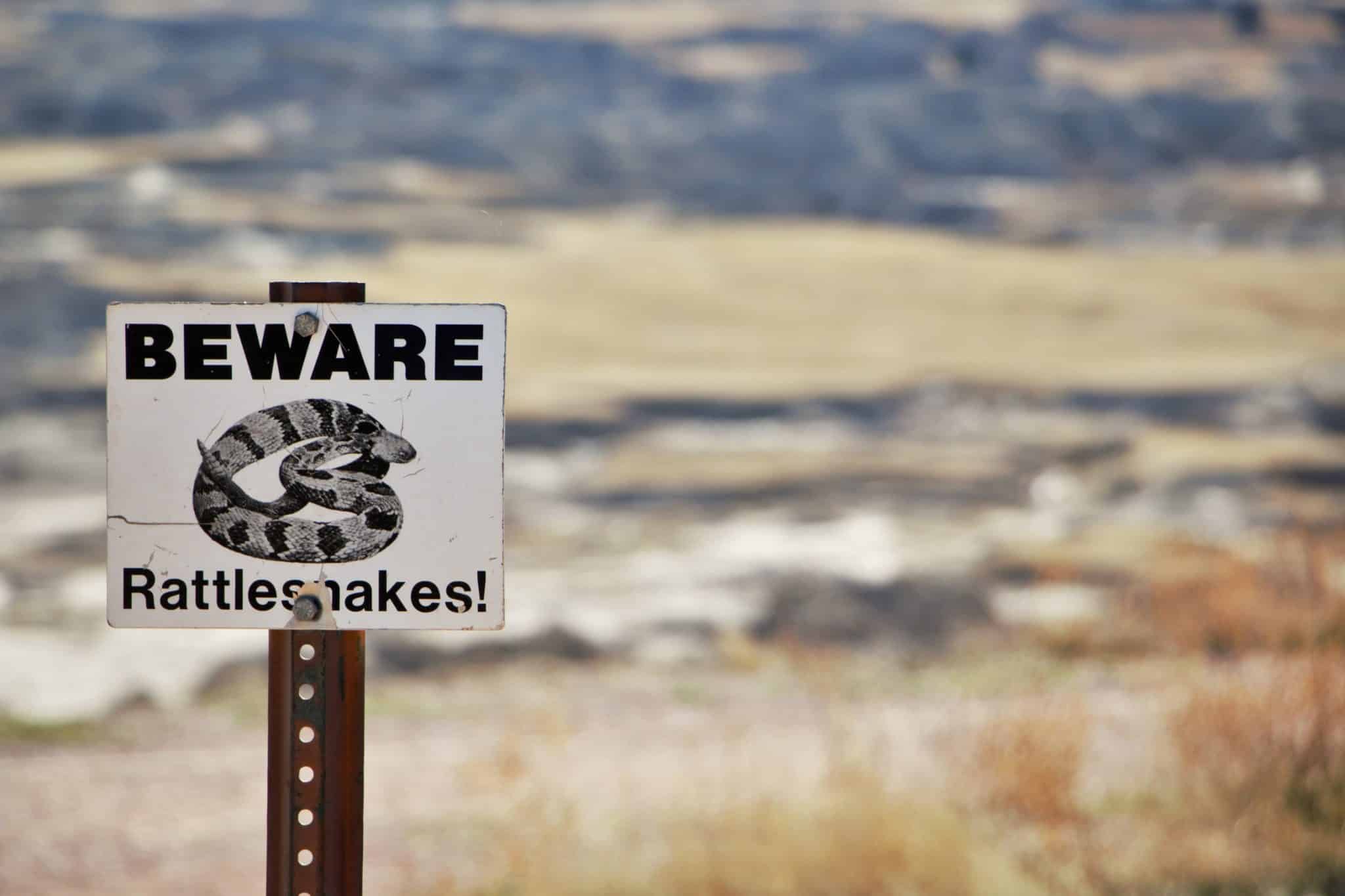
Rattlesnake Safety: Keep Your Family & Pets Safe
Rattlesnake season is in full swing here is San Diego. As the weather heats up, so does the snake population as they come out of hibernation to soak in the warm San Diego sun (after all, who can blame them!). You may have already encountered a rattlesnake on a hike or in your yard. If not, you are likely to do so before the end of summer in San Diego’s trails, parks, and rural neighborhoods.
While we may prefer not to have rattlesnakes as neighbors, they are an important part of the San Diego ecosystem and help control the rodent population. Since the snakes are here to stay, we’ve got to learn to live with them—at least April through October when they are out of hibernation.
What you need to know to keep your family and pets safe from rattlesnakes.
How to identify a rattlesnake:
Unlike the similar-colored gopher snake, which is also common in San Diego, rattlesnakes have a wide triangular-shaped head and thin neck. It is also important to note that rattlesnakes lose their rattles over time. They may not give you a warning rattle before you stumble upon them or they strike, so you have to be on the lookout to make sure you don’t accidentally disrupt one.
Never try to pick up a rattlesnake:
Most bites from rattlesnakes reportedly occur on the hand from people trying to capture them or pick them up. If you see a rattlesnake, DO NOT attempt to touch it or threaten it in any way. They would rather save their venom for hunting than bite you, but won’t hesitate to attack if they feel threatened. Back away slowly and leave the snake alone.
If you find a snake in your home or yard, call for help:
Do not attempt to remove the snake yourself. The San Diego Humane Society handles animal control for the cities of Oceanside, Vista, San Marcos, Escondido, and Poway. San Diego County animal control officers are available in other parts of the county. They will come to your home and remove the snake for you. The snakes are relocated to another area in the county that is safe for the community.
If you encounter a snake in the wild leave it alone:
Do not call animal services to remove a snake that you come across while hiking or in a rattlesnake’s natural habitat. Simply leave it undisturbed and avoid getting close, even if that means you have to redirect your hike. Rattlesnakes can only strike about one-third to one-half of their body length. They cannot jump. If you encounter one on the trail, slowly get a safe distance away from the snake and continue on. At least 20 feet from the snake will usually give it the space it needs.
Wear boots and long pants when hiking where rattlesnakes are known to be prevalent:
This will give the snake an extra layer to have to bite through if it strikes. Also, make sure to check under rocks and logs before sitting, as snakes often rest in the cool shade during the heat of the day.
Stay on the trail:
When hiking, stay on cleared paths where you can see snakes before you stumble upon them. Keep pets leashed and on the trail with you to prevent them from disrupting snakes on their own. Also keep kids close by so that they do not run ahead and encounter any rattlesnakes you haven’t seen first.
If you or a pet is bitten by a rattlesnake, seek immediate medical attention:
While rattlesnake bites are extremely painful, they often are not fatal to adults if treated quickly. Those most at risk for death from rattlesnake bites are pets and children. Here’s your quick guide to respond to a rattlesnake bite.
If a person is bitten by a rattlesnake:
- Get at least 20 feet from the snake after it bites you so that it does not continue to feel threatened and strike you again.
- Get to the emergency room as quickly as possible. Most hospitals have an antivenom they can treat you with.
- While waiting for help, keep the affected area below your heart to slow the venom from pumping to your heart.
- Keep still as much as possible. Movement will increase blood flow, which spreads the venom more rapidly.
- Remove clothing and jewelry from the affected area. Rattlesnake bites cause significant swelling, so any clothing or jewelry you can remove before the area swells will save it from constricting blood flow and having to be cut off later.
- Let the wound bleed freely for about 30 seconds to allow some of the venom to flow out of the wound, then cover it with a clean bandage.
- DO NOT: Wash the wound, cut it, suck it with your mouth, apply a tourniquet, apply ice or immerse it in water, or urinate on the bite. Also, do not give the victim anything to eat or drink while waiting for care. This may increase their metabolism, thus increasing the flow of venom in their bloodstream.
If your pet is bitten by a rattlesnake:
- Carry them to the car if possible. Limit their movement to prevent the venom from circulating in their bloodstream.
- Keep their wound below their heart to slow the circulation of the venom to their heart.
- Get them to the vet immediately.
- The faster your pet receives antivenom and treatment from the vet, the better their chance of survival. The survival rate in pets is 95% when pets are treated quickly and properly. The vet will administer IV fluids, painkillers, antibiotics and monitoring of the wound for infection.
Don’t let the threat of snakes keep you and your family from getting out and being active in San Diego this summer. Just remember to always have an eye out for our slithering friends and to avoid disrupting them if you do have an encounter. Awareness and prevention are the best form of care when it comes to co-existing with rattlesnakes in San Diego!
The doctors at Scripps Affiliated Medical Groups are conveniently located all over San Diego and ready to care for you and your family. Search our doctors today to find one near you!

Join our Senior Wellness Society for the latest news on Medicare and tips for healthy living in San Diego!
Sign up now ›Are you looking for specialized medical care in San Diego?
Our directory has more than 850 doctors in San Diego County of various specialties who are available to help you.
Find a doctor